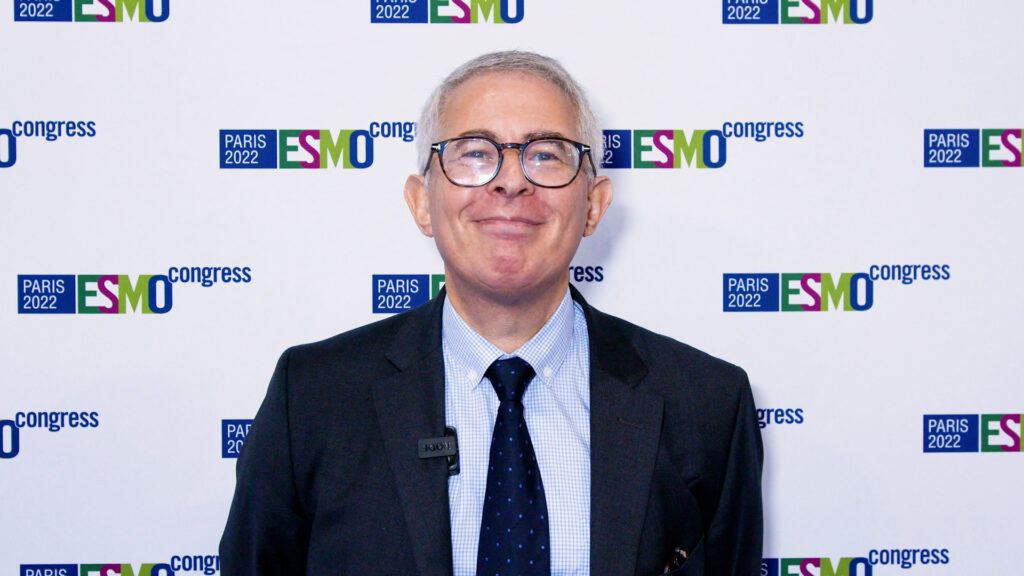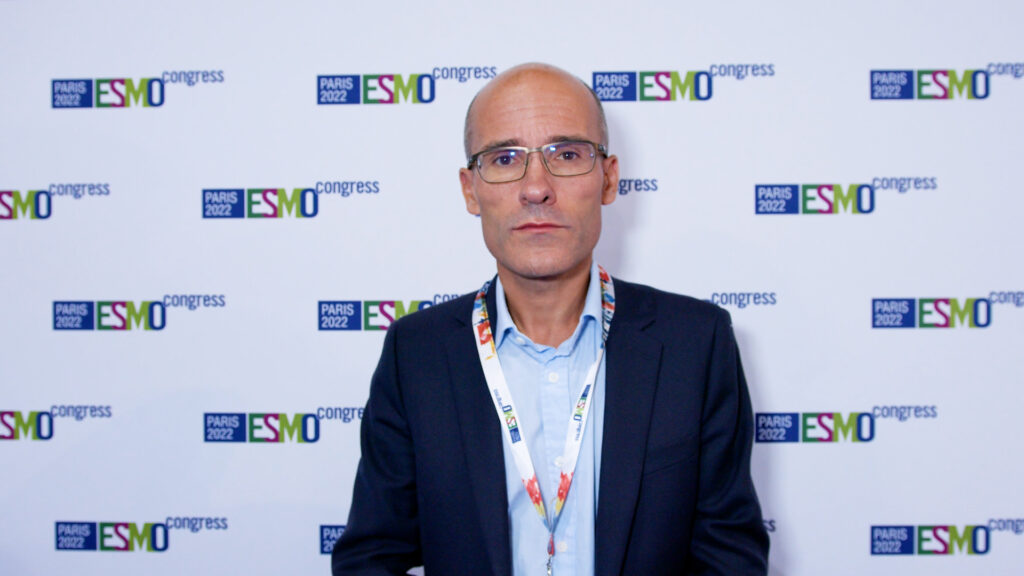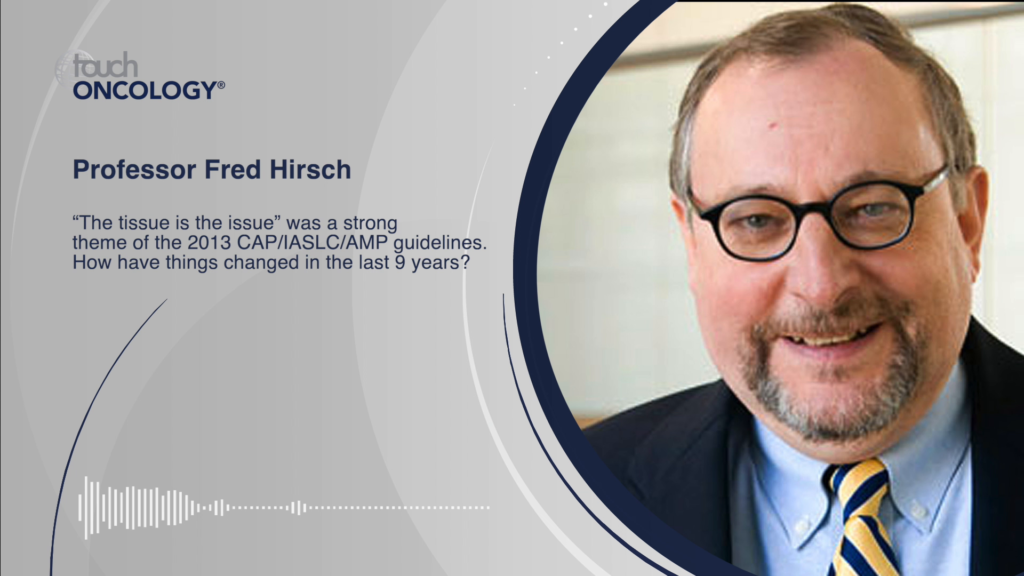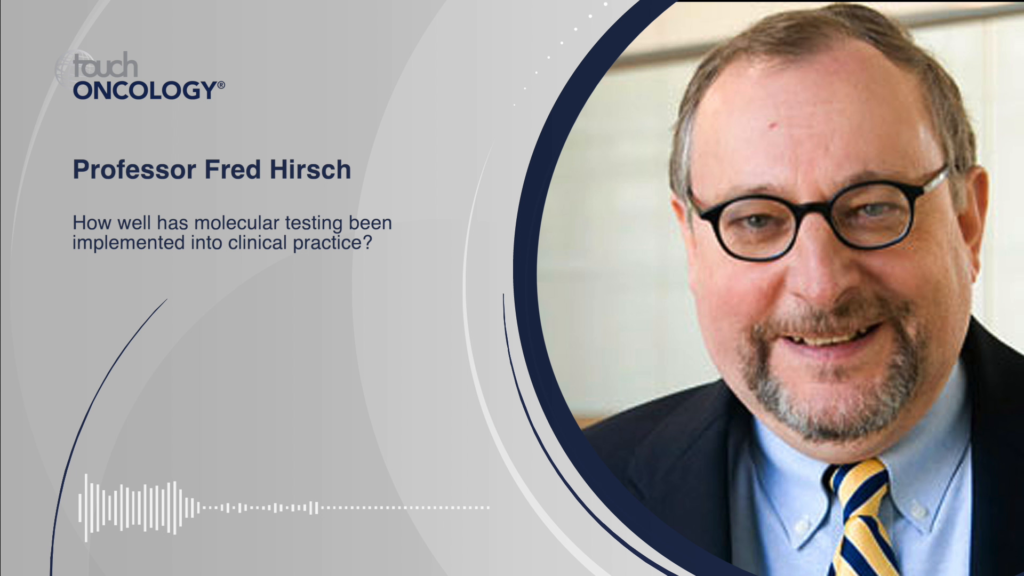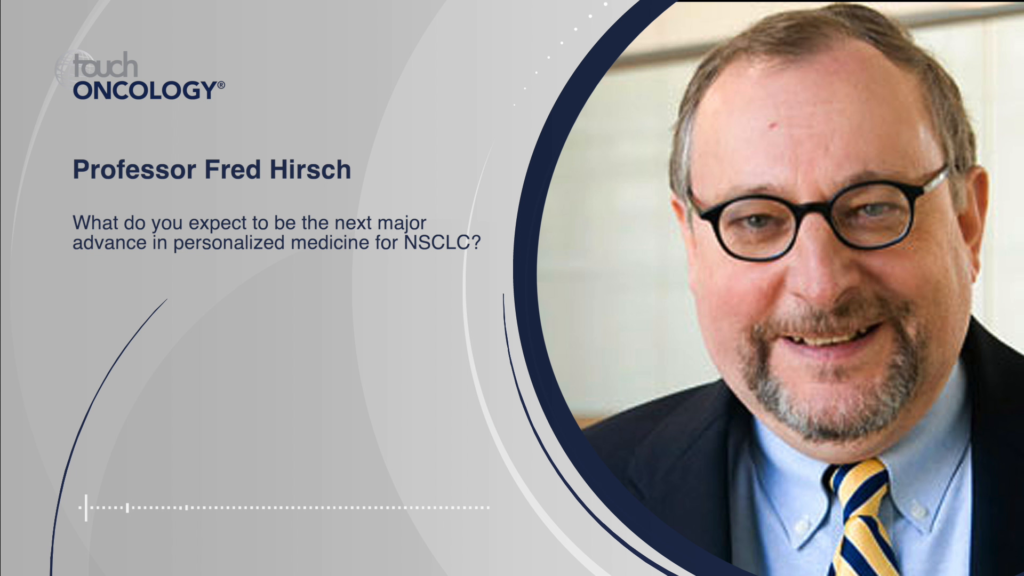Insights into the KEYNOTE-189 Study presented at American Association for Cancer Research Annual Meeting, Chicago, IL, US, April 14–18, 2018.
The use of immune checkpoint inhibitors has transformed the management of non-small cell lung cancer (NSCLC). Until recently, platinum-based chemotherapy was the first-line treatment for patients with NSCLC without any targetable mutations. Pembrolizumab (Keytruda®, Merck, Kenilworth, NJ, US) has now become a preferable option since its US Food and Drug Administration (FDA) approval in October 2016 for the first-line treatment of NSCLC with high expression of programmed death ligand 1 (PD-L1, score of at least 50%). FDA approval was granted following the KEYNOTE-024 study.1 Pembrolizumab is the only approved immunotherapy for the initial treatment of lung cancer and, in May 2017, was approved in combination with pemetrexed and carboplatin-based chemotherapy as first-line treatment for all patients with advanced non-squamous NSCLC. Approval was based on the phase II KEYNOTE-021 trial, in which the addition of pembrolizumab to chemotherapy showed significantly higher response rates and longer progression-free survival (PFS) than chemotherapy alone.2 However, uptake of this combined regimen has not been widespread due to the lack of phase III data and the fact that the KEYNOTE-021 study did not show a clear overall survival (OS) benefit.
The first interim analysis of the phase III KEYNOTE-189 study was presented at the American Association for Cancer Research (AACR) meeting, which was held on April 14–18, 2018, and was simultaneously published in the New England Journal of Medicine.3 Patients (n=616) with metastatic non-squamous NSCLC who had no sensitizing epidermal growth factor receptor (EGFR) or anaplastic lymphoma kinase (ALK) mutations, and had not received prior treatment for metastatic disease, were recruited across the whole range of PD-L1 expression. Participants were randomized to pemetrexed (500 mg/m2) and chemotherapy (investigator’s choice of cisplatin 75 mg/m2 or carboplatin AUC=5 mg/ml/min) plus either pembrolizumab (200 mg) or placebo every 3 weeks, for 4 cycles, followed by pembrolizumab or placebo for up to 35 cycles plus pemetrexed maintenance therapy. Patients were stratified by PD-L1 expression (<1%, 1–49%, and >50%). Crossover to pembrolizumab monotherapy was permitted among patients in the placebo group with verified disease progression.
After a median follow-up of 10.5 months, the median OS was not reached in the test arm, versus 11.3 months in the placebo arm. The OS at 12 months was 69.2% with pembrolizumab versus 49.4% in the placebo group (hazard ratio [HR] = 0.49, p<0.001). The median PFS was 8.8 months for pembrolizumab versus 4.9 months for placebo (HR for disease progression or death, 0.52; p<0.001). Improvement in OS was seen across all PD-L1 categories but was greatest in the highest PD-L1 group.
Toxicities were as expected with pembrolizumab: grade 3–5 adverse events (AEs) were reported in 67.2% of the pembrolizumab group and 65.8% of the placebo group. One unexpected finding was a higher incidence of acute kidney injury in the pembrolizumab group (5.2% versus 0.5%; grade ≥3 in 2.0%), which led to discontinuation of treatment in 2.0% of pembrolizumab patients. Overall, treatment discontinuation occurred in 13.8% versus 7.9% of patients. Three immune-mediated AEs (all pneumonitis) led to death in the pembrolizumab group.
According to lead investigator Leena Gandhi, associate professor in the Department of Medicine and director of Thoracic Medical Oncology Program, Perlmutter Cancer Center at NYU Langone Health: “Results from KEYNOTE-189 are practice-changing. This phase III trial demonstrated an improvement in overall response rate, PFS, and OS across all groups of patients, irrespective of PD-L1 expression, halving the risk of death, which is an unprecedented effect of therapy in the first-line setting for advanced non-squamous NSCLC without EGFR or ALK alterations.”
The announcement of these findings has been closely followed by the release of data from the KEYNOTE-042 study, at the American Society of Clinical Oncology (ASCO) meeting, which was held on June 1–8, 2018.4 This study resembled KEYNOTE-0241 in that it investigated pembrolizumab monotherapy in patients with either squamous or non-squamous NSCLC. However, this study was larger (1,274 patients compared with 305 in KEYNOTE-024) and included patients with PD-L1 expression of 1% or more, while KEYNOTE-024 recruited only patients with PD-L1 expression of at least 50%. Patients were randomized to up to 35 cycles of pembrolizumab 200 mg or chemotherapy (investigator’s choice of paclitaxel 200 mg/m2 plus carboplatin AUC 5 or 6 mg/ml/min for a maximum of 6 cycles for patients with squamous NSCLC, or carboplatin AUC 5 or 6 mg/ml/min plus pemetrexed 500 mg/m2 for a maximum of 6 cycles, followed by optional pemetrexed 500 mg/m2 for non-squamous NSCLC) and were stratified into three groups according to PD-L1 expression score: ≥50% (n=599), ≥20% (n=818), and ≥1% (n=1,274).4
At a median follow up of 12.8 months, OS was significantly longer in the pembrolizumab arm (HR 0.69). OS was 20 months with pembrolizumab versus 12.2 months with chemotherapy in patients with PD-L1 expression ≥50%; 17.7 months versus 13 months in those with PD-L1 ≥20%, and 16.7 months versus 12.1 months in those with PD-L1 ≥1%. The trial will also evaluate PFS, a secondary endpoint. In an exploratory analysis of all patients with PD-L1 1–49%, the median OS was 13.4 months with pembrolizumab versus 12.1 months for chemotherapy (HR 0.92). Grade 3–5 AEs were more frequent with chemotherapy versus pembrolizumab (41.0% versus 17.8%). All treatment-related AEs occurred more often in the chemotherapy group (89.9% versus 62.7%), leading to discontinuation in 9.4% and 9% of patients, respectively.4
Lead investigator Gilberto Lopes, of the Sylvester Comprehensive Cancer Center, University of Miami Health System, said: “A large number of patients with lung cancer now have a new treatment option with better efficacy and fewer side effects than standard chemotherapy. Our study shows that pembrolizumab provides more benefit than chemotherapy for two-thirds of all people with the most common type of lung cancer.”
These studies have shown that both combined pembrolizumab plus chemotherapy and pembrolizumab monotherapy are beneficial in squamous and non-squamous NSCLC, not only for patients with high PD-L1 expression, but for any patients with PD-L1 exceeding 1%. In an interview filmed at ASCO, Dr Lopes advised that patients with high-volume disease and low PD-L1 expression should receive the combination regime, while, for those with low-volume disease and high PD-L1 expression, pembrolizumab monotherapy is more appropriate.
5
There is a need for a head-to-head comparison of pembrolizumab plus chemotherapy versus pembrolizumab alone. We also need more research to define patient groups who benefit from pembrolizumab, rather than the broad groupings of PD-L1 expression that have been used in these studies.
The significance of these findings cannot be overestimated. According to ASCO expert John Heymach, MD, PhD, “In an era for which chemotherapy was the only option for NSCLC patients, this is coming to a close. Virtually all NSCLC patients can receive a non-chemotherapy regimen with immunotherapy or, if they have a driver mutation, with an appropriate targeted agent.”
References
1. Reck M, Rodriguez-Abreu D, Robinson AG, et al. Pembrolizumab versus chemotherapy for PD-L1-positive non-small-cell lung cancer. N Engl J Med. 2016;375:1823–33.
2. Langer CJ, Gadgeel SM, Borghaei H, et al. Carboplatin and pemetrexed with or without pembrolizumab for advanced, non-squamous non-small-cell lung cancer: a randomised, phase 2 cohort of the open-label KEYNOTE-021 study. Lancet Oncol. 2016;17:1497–508.
3. Gandhi L, Rodriguez-Abreu D, Gadgeel S, et al. Pembrolizumab plus chemotherapy in metastatic non-small-cell lung cancer. N Engl J Med. 2018;378:2078–92.
4. Lopes G, Wu Y-L, Kubada I, et al. Pembrolizumab (pembro) versus platinum-based chemotherapy (chemo) as first-line therapy for advanced/metastatic NSCLC with a PD-L1 tumor proportion score (TPS) ≥ 1%: Open-label, phase 3 KEYNOTE-042 study. J Clin Oncol. 2018;36:suppl; abstr LBA4.
5. OncLive. Dr Lopes on the KEYNOTE-042 Results of Frontline Pembrolizumab in NSCLC, 2018. Available at: www.onclive.com/conference-coverage/asco-2018/dr-lopes-on-the-keynote042-results-of-frontline-pembrolizumab-in-nsclc (accessed June 20, 2018).





